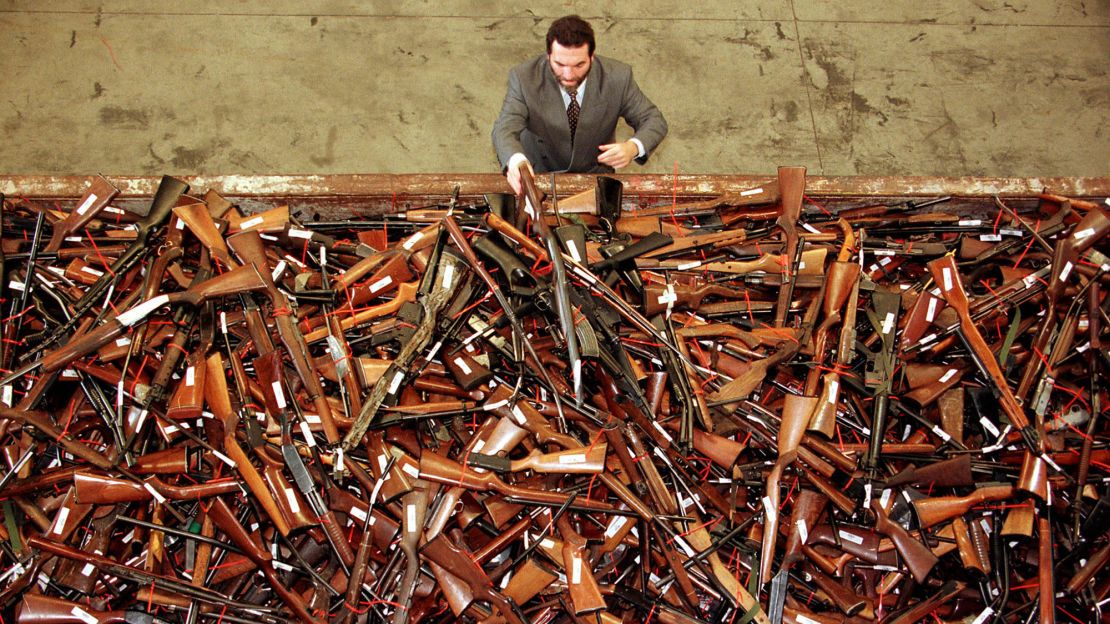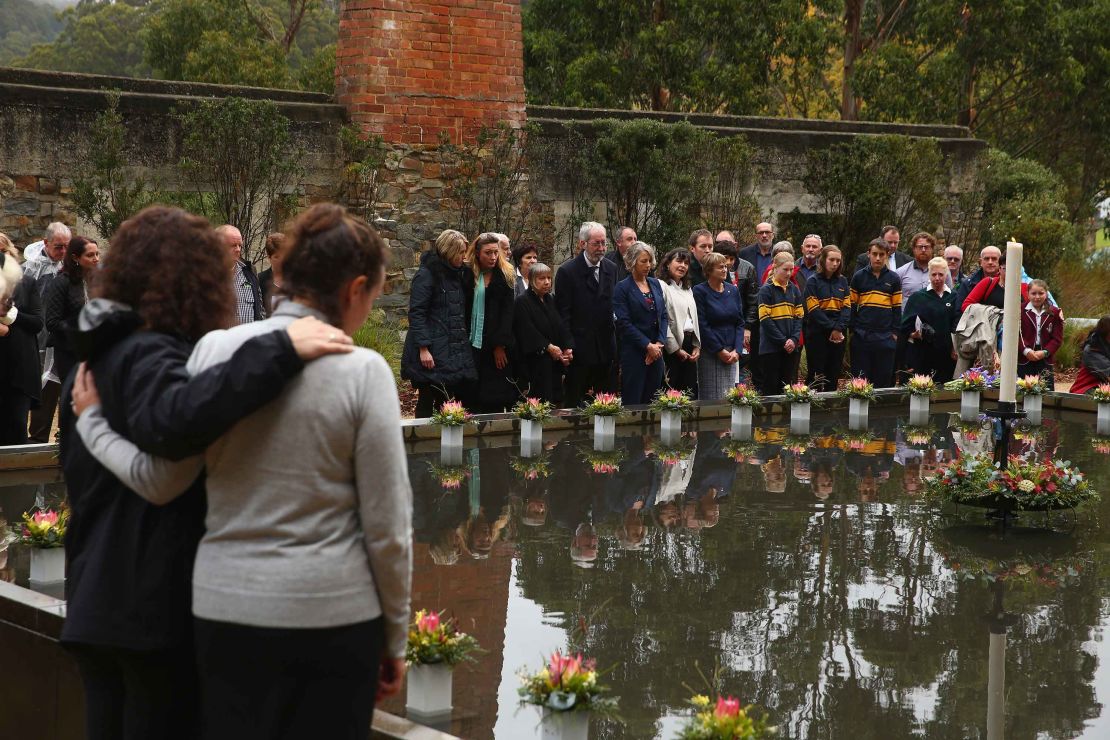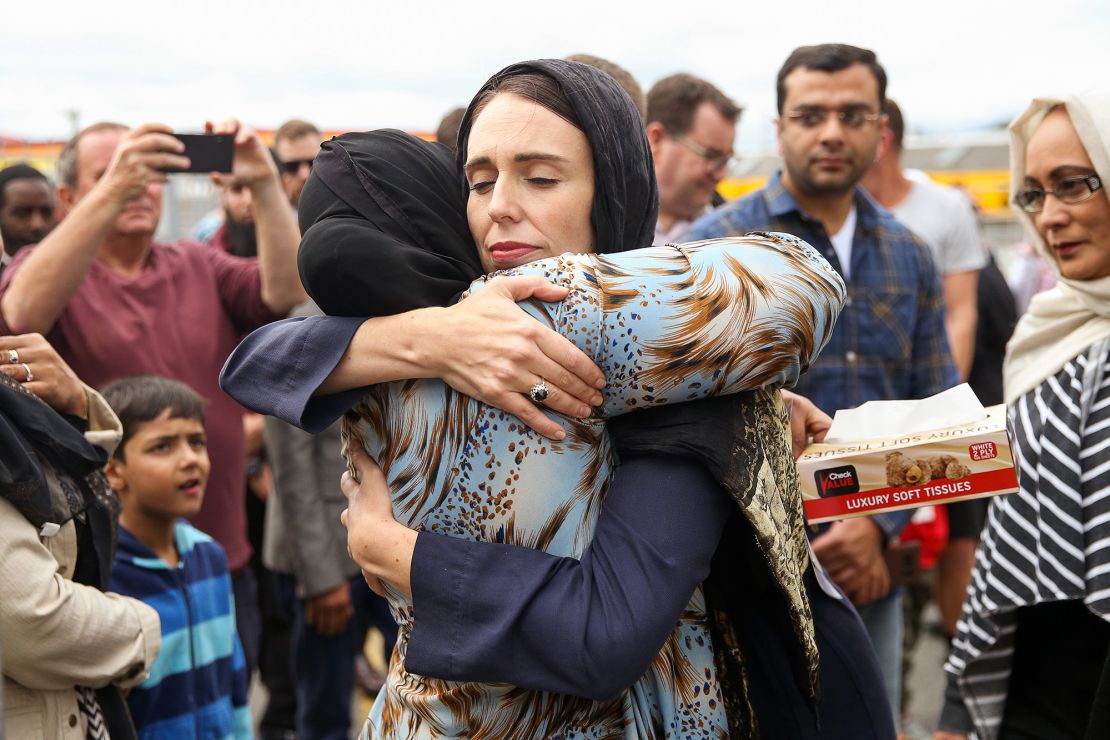Editor’s Note: Philip Alpers is adjunct associate professor and founding director of GunPolicy.org, a global project at the University of Sydney School of Public Health which compares armed violence, firearm legislation and injury prevention across 250 jurisdictions worldwide. The views expressed in this commentary are his own. Read more opinion on CNN.
A man – almost always a man – commonly with no criminal history and no diagnosis of mental illness, armed with a lawfully obtained semiautomatic ‘assault’ weapon, kills and injures a large number of innocents in a place they imagined to be safe.
It happens around the world, but horrifyingly more and more often in the United States, most recently in Uvalde, Texas and Buffalo, New York.
To those of us who live in culturally similar nations, but where the availability of lethal weapons is limited, Americans’ increasing reliance on guns even in the face of escalating horrors is unfathomable.
We live in far less fear of gunfire, and view America’s self-inflicted problem with firearms as a symptom of crippling political dysfunction. As each shooting eclipses the last, as fear and ideology trump the evidence once again, it’s terrifying to imagine the scale, the sheer enormity of the tipping point which might finally force American politicians to face their collective responsibility and enact change.
Meanwhile, other nations in the aftermath of mass shootings have tightened restrictions on gun ownership that slowed or nearly eradicated such massacres.
Compared with less headline-grabbing gun homicides, which usually involve people who know each other, and much more so than with gun suicides, mass shootings are easier to tackle.
The multiple killers’ weapons of choice, self-loading firearms originally marketed by the gun industry as ‘assault rifles,’ along with their ammunition and high-capacity magazines, provide a more effective focus than limiting all gun types.
That said, it is futile to suggest the US could destroy rapid-fire semiautomatic firearms in the way Australia did. To match the one-third of civilian guns sent to smelters in the years since Australia’s gun law reform, Americans would have to destroy as many as 130 million firearms.
Yet the results of Australia’s gun buyback are encouraging. Stringent limits on the availability of high-risk weapons were followed by fewer firearm-related homicides overall, and a much greater reduction in mass gun homicides.
Here’s how three nations – Australia, the United Kingdom and New Zealand – tightened gun controls after mass shootings to safeguard future generations.
AUSTRALIA
Port Arthur, 1996

In a mere 90 seconds inside a tourist café at Port Arthur, Tasmania, in 1996, one young man killed 20 holidaymakers with the first 29 shots from a semiautomatic rifle. His final tally was 35 dead and 18 injured.
To a nation which had lost 105 lives to gun massacres in the preceding decade, this was the last straw. With a mandate from polls showing 90-95% public support, newly elected Prime Minister John Howard, one of the country’s most conservative leaders in decades, took only 12 days to broker nationwide, bipartisan gun law reform across all eight states and territories.
Semiautomatic long guns were prohibited, while all gun owners were required to prove a genuine reason to possess a firearm, for example rural occupation or membership in a club that competes in Olympic shooting disciplines. Self defense remained an unacceptable reason and owners were obliged to register every gun with police.
In the 26 years following Port Arthur, Australia mounted scores of federal and state-led gun amnesties and buybacks. Well over 1 million guns were handed in for destruction.

Two-thirds of these were purchased at market price by the federal government at a cost of AU$15-20 for each taxpayer ($12-16). More than 300,000 additional firearms were handed over by owners who had no obligation to do so and who received no compensation in return.
All states now offer a permanent amnesty to gun owners and in recent years there has been an upsurge in collections. Since the Tasmanian massacre Australians have surrendered an estimated one-third of their privately owned firearms.
Despite this, since the 1996 law reforms the country’s gun dealers continued to import and sell to civilians an average of 55,000 single-shot firearms each year, while farmers, hunters and sport shooters continue to use guns as before.
Shooters and non-shooters alike often mention with pride the nation’s collective effort to remove rapid-fire weapons, repeating versions of former prime minister Howard’s mantra at the time: “I do not want Australia to go down the American path” with guns.
And the result? In the decade before gun law reform in Australia there were 13 mass shootings. During the 22 years that followed there were none – a record broken only when a farmer shot and killed six members of his family, then himself in 2018. (A mass shooting is defined here as five or more people shot dead, not including the perpetrator).
Following gun law reform, the risk of dying by gunshot in Australia fell by more than 50% and stayed there. Globally, Australia saw one of the largest annual rates of change in its number of firearm-related deaths. The country’s rate of gun homicide is now 33 times lower than that of the US.
UNITED KINGDOM
Dunblane, 1996

Grounded in a class system in which the wealthy went shooting and the poor poached game, firearm legislation in Britain has always most stringently controlled rifles, revolvers and pistols. In addition, many Britons just don’t like guns.
In 1987 a man armed with a rapid-fire rifle killed 16 people including an unarmed policeman and his own mother in Hungerford, England. A national outcry prompted the UK to ban semiautomatic rifles and some shotguns.
Almost a decade later, in 1996, after a licensed pistol shooter killed 16 elementary school pupils and a teacher in Dunblane, Scotland, renewed public pressure along with a change of government saw the UK further banning all handguns.
In the gun buyback which followed, owners were paid £90.2 million ($146 million) in compensation for returned firearms, parts and ammunition. (The restrictions imposed in England, Wales and Scotland did not apply to Northern Ireland).
In 2003, following a ‘gun summit’ called to counter a rise in armed crime fueled largely by handguns smuggled from Europe, another national amnesty collected 43,908 more guns.
From 1996 to 2009, the UK destroyed a total of 226,000 firearms from a national stockpile already proportionately smaller per capita than most Western nations.
The 26 years after the Dunblane school massacre saw two more mass shootings, one in Cumbria in 2010 and another near Plymouth in 2021.
The rate of firearm-related death in the UK has always been low. Since the 1996–1997 gun bans, this continued to trend steadily downwards.
NEW ZEALAND
Christchurch, 2019

In 1990, in the small South Island settlement of Aramoana, a man armed with a semiautomatic rifle killed 13 people including four children and a policeman. Despite public pressure to ban rapid-fire weapons, the country’s well-established gun lobby prevented all but partial, flawed restrictions on a small number of semiautomatic firearms.
Three more mass shootings in 1992, 1994 and 1997 reinforced support for a wider ban, but in a country with more guns per capita than either the UK or Australia, the shooters’ lobby still dictated police and government policy.
Then in March 2019, an Australian visitor denied rapid-fire weapons in his own country exploited New Zealand’s lack of regulation to gain a firearm license and to convert an entry-level rifle into an ‘assault rifle’.
He then fatally shot 51 people and injured 40 more at two Christchurch mosques. Less than a month later – propelled by national outrage and speed of government action – Parliament voted 119-1 to ban, then to buy back rapid-fire weapons and high-capacity magazines.
The legislation was enacted the following day and the buyback which followed saw owners paid market price. Over a period of five months, a total of 57,716 firearms and 205,209 magazines and parts were collected for destruction at a cost of almost NZ$104 million ($68 million).
The national firearm register – abandoned in 1983 – is now being rebuilt to register all guns to their owners over a period of five or more years.
Get our free weekly newsletter
Elsewhere around the globe, in the years 2003-2018, Argentina, Belgium, Germany, Sweden and Norway, all of which suffered mass watershed multiple shootings, destroyed more than 800,000 firearms. Yet such efforts are dwarfed by the global stockpile estimated to number 1 billion guns, 85% of which are in civilian hands.
In America, the change demanded by so many citizens is, one day, surely inevitable. With its admirable record of public health interventions which have saved millions of lives, the world’s best-resourced society must eventually fend off the self-interest groups and politicians who by their inaction fuel armed attacks on the nation’s families.
Although Americans are free to introduce, or to repeal a constitutional amendment just as they did to expand suffrage to all citizens, to end slavery, and to introduce and to repeal Prohibition, gun massacres seem set to spiral ever upwards until enough voters demand the obvious – change.





